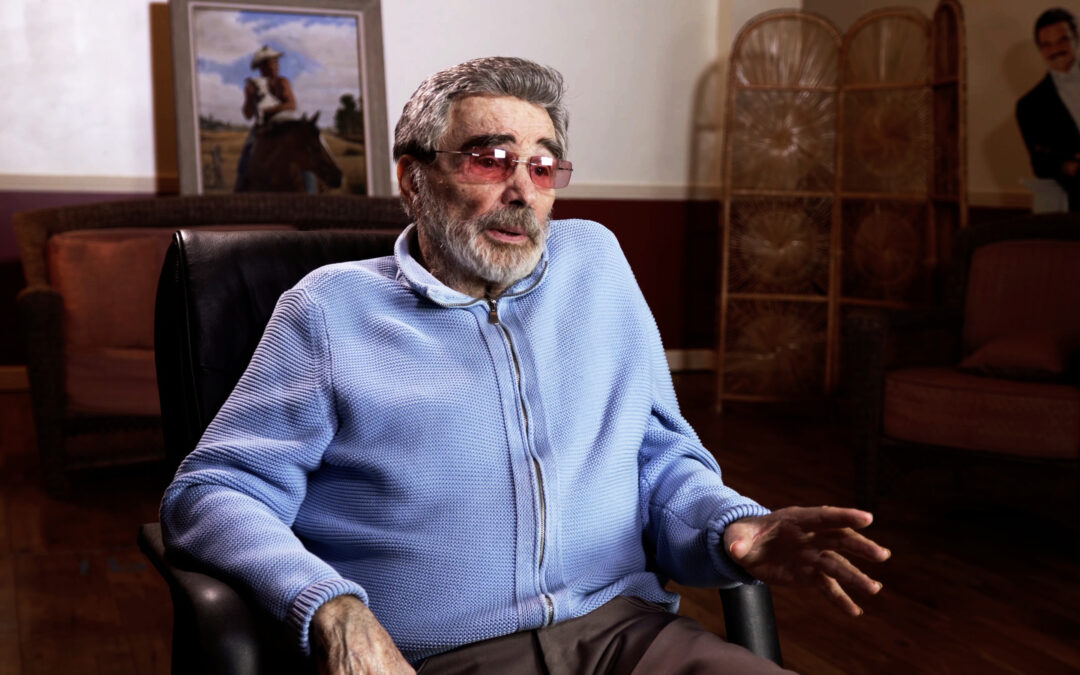One highlight in Rick Pamplin’s documentary “Burt Reynolds: The Last Interview” is learning that the actor was the original choice for the George Spahn character in Quentin Tarantino’s 2019 “Once Upon a Time in Hollywood.”
Reynolds went to a table read with the cast and rehearsed before he had a heart attack and died in September 2018 (Bruce Dern ended up taking the memorable role).
Reynolds’ brief involvement isn’t mentioned in the lengthy interview at the center of Pamplin’s film, but rather by Tarantino, interviewed at the beginning and end of the work. A big Reynolds fan, he’s the perfect one to talk enthusiastically about the onetime sex symbol who appeared in more than 80 films.
As it turned out, Reynolds’ final major role, fittingly, was as lead in 2017’s “The Last Movie Star” with Chevy Chase and Ariel Winter.
Because of the uncertainty of life, one never knows which will be one’s last film — nor one’s last interview.
I’ve done a few interviews with people that turned out to be their last, and while that lends some extra measure of importance to the resulting pieces, it doesn’t necessarily follow that a great summation will always be forthcoming from the subject.
But Reynold’s long career in movies gave him a lot to talk about to Pamplin, and he seemed to be in an unusually talky mood, bringing up things that weren’t necessarily asked, or ruminating on some past events.
I once talked to Reynolds in a similar setup, also in Florida. It was 40 years ago, during a junket for the movie “The Man Who Loved Women.” He mostly sat in the same kind of canvas directors’ chair and shrugged or smirked his way through the briefest of replies, sailing through it without much of a thought, the same way he did in his movies.
He’s got some of that spark when he sat for Pamplin in his 80s, though his replies are slowed and more measured.
There are some colorful but not always understandable aphorisms he throws out. Like: “I don’t teach acting, I teach behavior.” Or: “Try to behave and not act.”
Some names are dropped here and there. He mentions Jon Voight, who “pops up all the time on some of the dumbest shows I’ve ever seen.” He calls Charlton Heston “the most uncoordinated person on earth. But what you get,” he adds, “…there’s nobody who can wear a toga like him.”
He’s clearly not impressed by current films, singling out Eddie Murphy for pretty much ”doing his nightclub act” while playing roles.
The interview was initially supposed to be about arcane details of film financing for a documentary Pamplin was working on called “Movie Money Confidential” and there’s a few questions about that. Then he expands it to talk about teaching at his acting institute, some of his favorite roles and some teachers that helped him as he was growing up and making the transition from injured Florida football player to stuntman and actor.
It’s hard to say whether he was coaxed into more expansive answers through the lavish and constant compliments that come with nearly every inquiry, or whether he wanted to deliver something extra to assembled students, who sit mostly noiselessly also watching the interview.
Despite its occasional high points, the hour-long discourse is uncut, probably unwisely. It’s uninterrupted by stills from whatever film he’s talking about, a cut to the interviewer or any glimpse of the silent students watching.
Without the budget to include a single clip from any movie he’s ever been in, it’s not a very satisfying portrait of his long career. Nor does it include a lot of the interesting details of his life. When Tarantino mentions “the Cosmopolitan thing,” it’s never explained as the time he posed naked as a lark for the magazine — something that made him a household name briefly even if it may have kept him from being taken seriously as an actor in things like “Deliverance.”
Also unexplained is his whole connection to what was once the Burt Reynolds Dinner Theatre in Jupiter, Fla. Though it’s seen lovingly in drone shots, it’s now called the Maltz Jupiter Theatre and his acting school there had moved elsewhere to what is now called the Palm Beach Institute for the Entertainment Arts (The missing explanation has to do with a set of bankruptcies that are never mentioned).
Still, as if to set up the interview (or pad the movie), there are a series of interviews with current theater operators or local film commissioners that lend the movie a kind of unintended “Waiting for Guffman” quality.
I can understand why Pamplin may have thought he had something special because it ended up being the last time Reynolds sat to talk. And while it has its moments, it’s missing so much else (clips, examples, other scenes) that it doesn’t serve as the best way to remember the onetime box office star.
